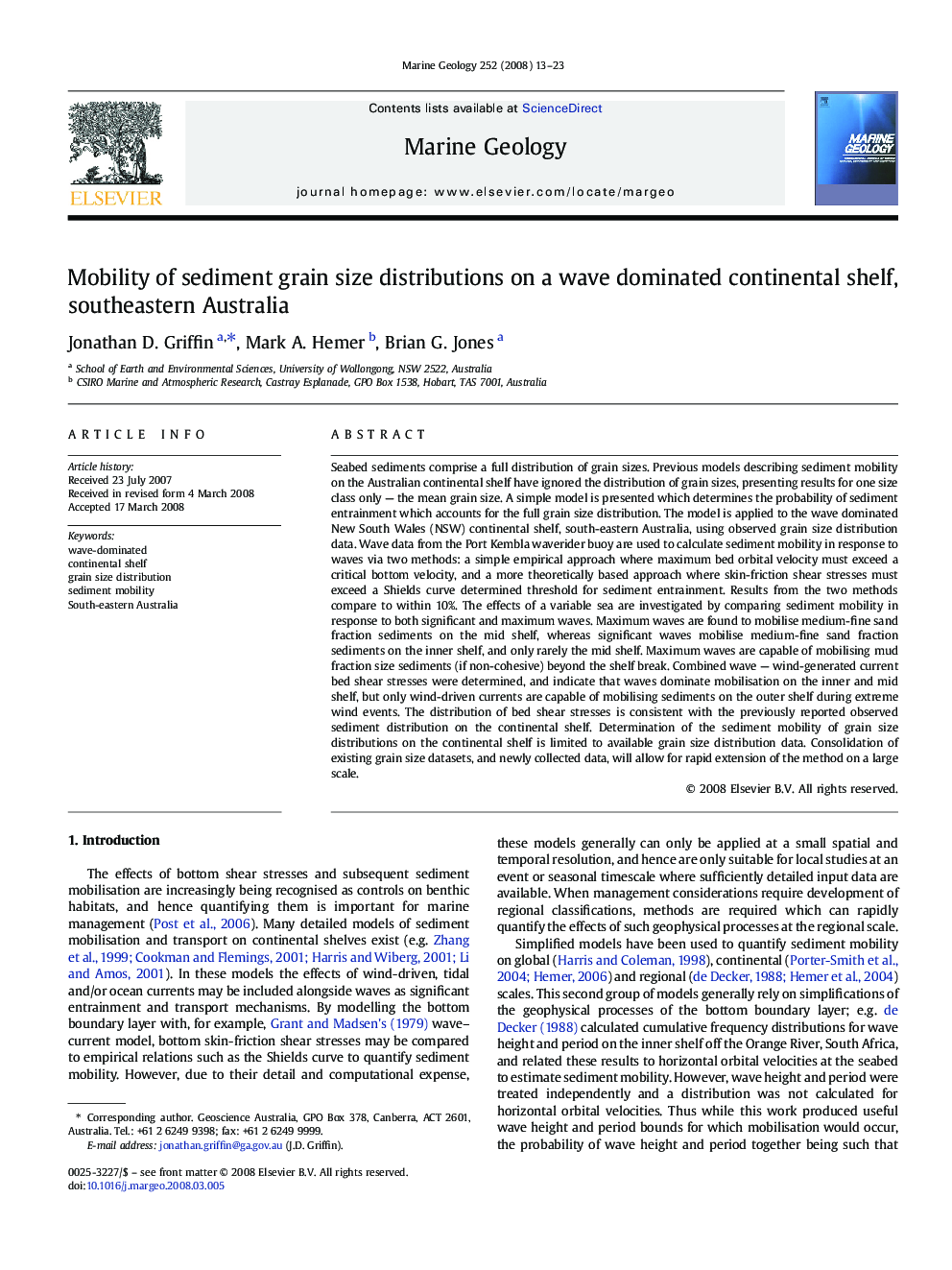| Article ID | Journal | Published Year | Pages | File Type |
|---|---|---|---|---|
| 4719313 | Marine Geology | 2008 | 11 Pages |
Seabed sediments comprise a full distribution of grain sizes. Previous models describing sediment mobility on the Australian continental shelf have ignored the distribution of grain sizes, presenting results for one size class only — the mean grain size. A simple model is presented which determines the probability of sediment entrainment which accounts for the full grain size distribution. The model is applied to the wave dominated New South Wales (NSW) continental shelf, south-eastern Australia, using observed grain size distribution data. Wave data from the Port Kembla waverider buoy are used to calculate sediment mobility in response to waves via two methods: a simple empirical approach where maximum bed orbital velocity must exceed a critical bottom velocity, and a more theoretically based approach where skin-friction shear stresses must exceed a Shields curve determined threshold for sediment entrainment. Results from the two methods compare to within 10%. The effects of a variable sea are investigated by comparing sediment mobility in response to both significant and maximum waves. Maximum waves are found to mobilise medium-fine sand fraction sediments on the mid shelf, whereas significant waves mobilise medium-fine sand fraction sediments on the inner shelf, and only rarely the mid shelf. Maximum waves are capable of mobilising mud fraction size sediments (if non-cohesive) beyond the shelf break. Combined wave — wind-generated current bed shear stresses were determined, and indicate that waves dominate mobilisation on the inner and mid shelf, but only wind-driven currents are capable of mobilising sediments on the outer shelf during extreme wind events. The distribution of bed shear stresses is consistent with the previously reported observed sediment distribution on the continental shelf. Determination of the sediment mobility of grain size distributions on the continental shelf is limited to available grain size distribution data. Consolidation of existing grain size datasets, and newly collected data, will allow for rapid extension of the method on a large scale.
